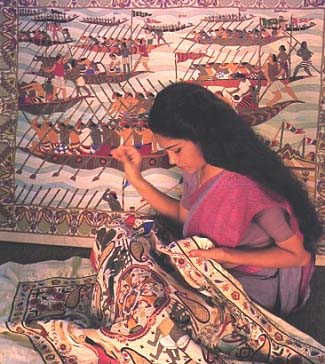Animals
The Bengali Culture

Bangladesh
• Chittagong
• Home
• Origin
• Animals
• Poetry

Population:
Officially given at 109,963,551 in July 1988 from the beareu of census of Bangladesh. Eighth largest population in world. Annual growth rate 2.6 percent. Projected to reach more than 140 million by year 2000. About 82 percent live in rural areas, 18 percent in urban areas. In 1988 population density 821 per square kilometer, highest in world. Population control top priority for government.Ethnic Groups:
Over 98 percent Bengalis. Approximately 600,000 Biharis (Urdu-speaking, non-Bengali Muslims) and 900,000 members of tribal minority groups. Main tribal groups Chakmas, Marmas, Tipperas, and Mros, living primarily in Chittagong Hills Tracts.Languages:
Bangla (official language); English widely used by educated elite. Arabic used in very few Muslim homes. Various tribal languages.Religion:
In 1988 nearly 83 percent Muslim, 16 percent Hindu, less than 1 percent Buddhist, Christian, and tribal religions.Education:
Schools based on British system: five years primary, five years lower secondary, and two years higher secondary. Higher education includes 758 general colleges, 7 universities, and 50 professional colleges. Traditional emphasis on arts and humanities; increased emphasis in late 1980s on technical subjects. Numerous religious-affiliated primary schools. In 1988 national literacy rate officially 29 percent, possibly lower; men 39 percent, women 18 percent; urban 35 percent, rural 17 percent.Health:
Life expectancy almost equal for males and females, averaging 55.1 years in 1986. Major health hazards infectious and parasitic diseases, poor nutrition, and inadequate sanitation. High infant mortality rate at 111.9 per 1,000; young children represented 40 percent of deaths annually.Contact